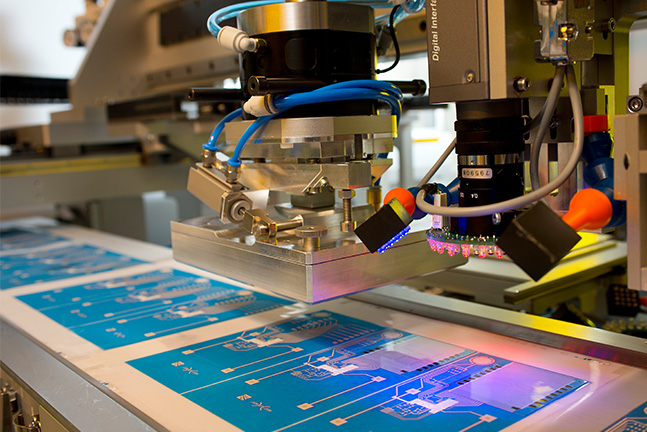Flexible hybrid electronics offers novel opportunities for many high-performance and "smart" products - for example in the context of the Internet of Things vision. The roll-to-roll manufacturing systems at Fraunhofer EMFT enable cost-effective processing of films and other flexible substrates to develop flexible, bendable, flat and large-area electronic systems.
Flexible Hybrid Electronics

Since the beginning of 2020, Fraunhofer EMFT possesses a pilot line with roll-to-roll lithography, laser structuring, printing, vacuum-based techniques, placement (assembly) and system integration. This enables cost-effective processing for the development of electronic systems that are simultaneously thin, flexible and large-area.
In the realization of flexible hybrid electronics, the foil processes developed at Fraunhofer EMFT are used together with processes from various classic technology areas (e.g. silicon, MEMS or printed circuit board technologies). A key technological role is played by the heterointegration of silicon and foil technology: While silicon technology allows extremely miniaturized components to be realized, foil technology expands the scope for design and enables flexible, flat and biocompatible electronics. Application examples include sensors on curved surfaces, body-related sensor technology for health monitoring, multimodal sensor technology for robots that will interact with humans in the future, "smart textiles" and a variety of distributed, networked sensor modules for the intelligent control of machines and processes, summarized under the buzzword Industrie 4.0. The combination of capabilities in thin silicon and foil technology allows the realization of a foil-packaged and rewired IC (chip-in-foil package) without giving up the advantages of low height and flexibility.
Examples of outstanding development in foil-based sensor technology at Fraunhofer EMFT include very long and thin pressure sensor strips that enable uninterrupted measurement of air flows, as well as microstructured electrode geometries that are highly sensitive and suitable for capacitive or electrochemical sensors. Fraunhofer EMFT's foil sensors provide ideal solutions for "open packages" that allow both access to the surrounding medium and secure encapsulation of the electronic components. As a unique technology offering, Fraunhofer EMFT also provides the associated integration technology for IC devices and communication interfaces.

